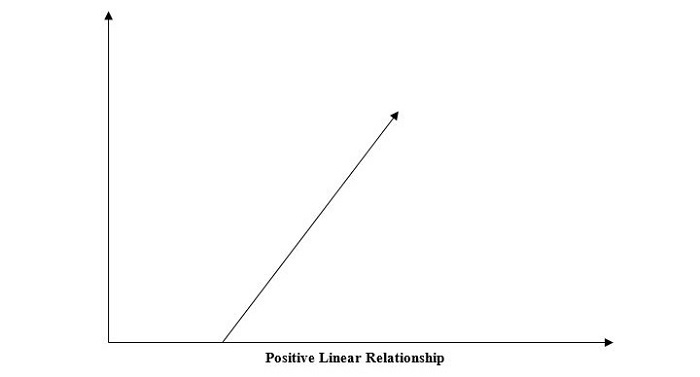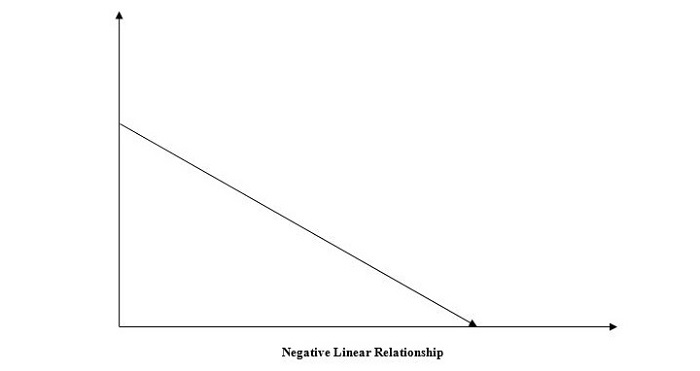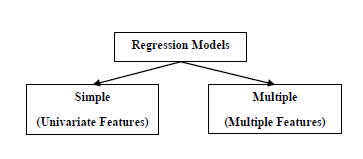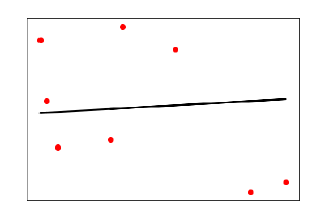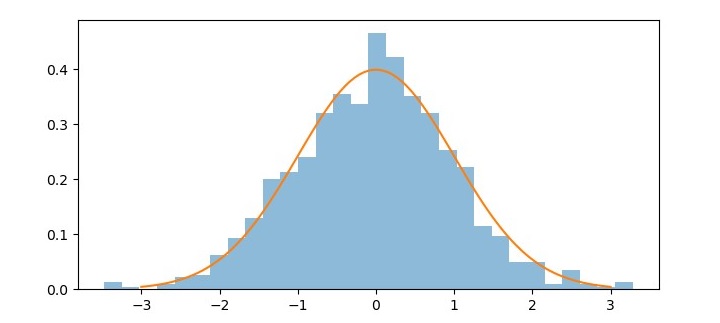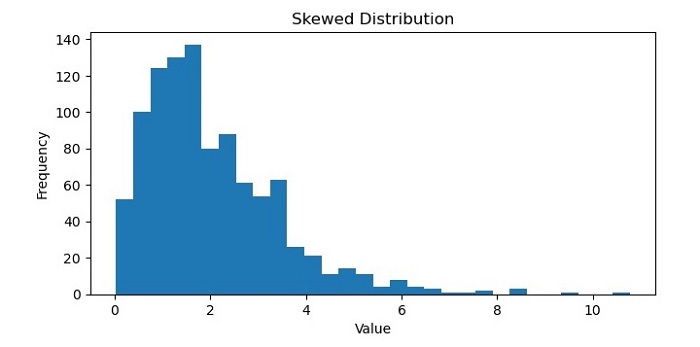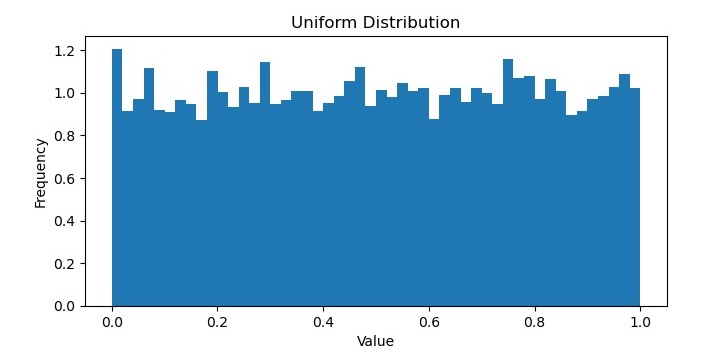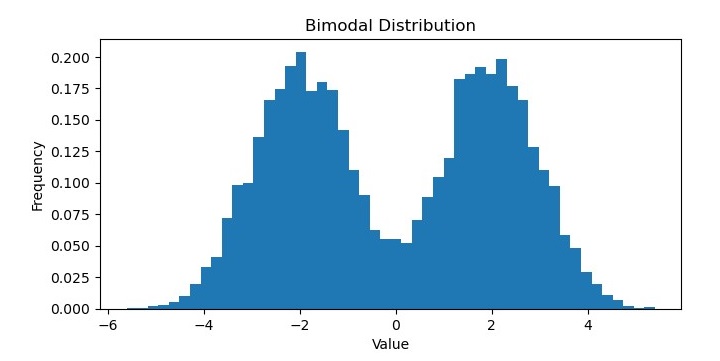Multiple linear regression in machine learning is a supervised algorithm that models the relationship between a dependent variable and multiple independent variables. This relationship is used to predict the outcome of the dependent variable.
Multiple linear regression is a type of linear regression in machine learning. There are mainly two types of linear regression algorithms −
- simple linear regression − it deals with two features (one dependent variable and one independent variable).
- multiple linear regression − deals with more than two features (one dependent variable and more than one independent variables).
Let’s discuss multiple linear regression in detail −
What is Multiple Linear Regression?
In machine learning, multiple linear regression (MLR) is a statistical technique that is used to predict the outcome of a dependent variable based on the values of multiple independent variables. The multiple linear regression algorithm is trained on data to learn a relationship (known as a regression line) that best fits the data. This relation describes how various factors affect the result. This relation is used to forecast the value of dependent variable based on the values of independent variables.
In linear regression (simple and multiple), the dependent variable is continuous (numeric value) and independent variables can be continuous or discreet (numeric value). Independent variables can also be categorical (gender, occupation), but they need to be converted to numerical values first.
Multiple linear regression is basically the extension of simple linear regression that predicts a response using two or more features. Mathematically we can represent the multiple linear regression as follows −
Consider a dataset having n observations, p features i.e. independent variables and y as one response i.e. dependent variable the regression line for p features can be calculated as follows −
h(xi)=w0+w1xi1+w2xi2+⋅⋅⋅+wpxip
Here, h(xi) is the predicted response value and w0,w1,w2….wp are the regression coefficients.
Multiple Linear Regression models always includes the errors in the data known as residual error which changes the calculation as follows −
yi=w0+w1xi1+w2xi2+⋅⋅⋅+wpxip+ei
We can also write the above equation as follows −
yi=h(xi)+eiorei=yi−h(xi)
Assumptions of Multiple Linear Regression
The following are some assumptions about the dataset that are made by the multiple linear regression model −
1. Linearity
The relationship between the dependent variable (target) and independent (predictor) variables is linear.
2. Independence
Each observation is independent of others. The value of the dependent variable for one observation is independent of the value of another.
3. Homoscedasticity
For all observations, the variance of the residual errors is similar across the value of each independent variable.
4. Normality of Errors
The residuals (errors) are normally distributed. The residuals are differences between the actual and predicted values.
5. No Multicollinearity
The independent variables are not highly correlated with each other. Linear regression models assume that there is very little or no multi-collinearity in the data.
6. No Autocorrelation
There is no correlation between residuals. This ensures that the residuals (errors) are independent of each other.
7. Fixed Independent Variables
The values of independent variables are fixed in all repeated samples.
Violations of these assumptions can lead to biased or inefficient estimates. It is essential to validate these assumptions to ensure model accuracy.
Implementing Multiple Linear Regression in Python
To implement multiple linear regression in Python using Scikit-Learn, we can use the same LinearRegression class as in simple linear regression, but this time we need to provide multiple independent variables as input.
Step 1: Data Preparation
We use the dataset named data.csv with 50 examples. It contains four predictor (independent) variables and a target (dependent) variable. The following table represents the data in data.csv file.
data.csv
| R&D Spend | Administration | Marketing Spend | State | Profit |
|---|---|---|---|---|
| 165349.2 | 136897.8 | 471784.1 | New York | 192261.8 |
| 162597.7 | 151377.6 | 443898.5 | California | 191792.1 |
| 153441.5 | 101145.6 | 407934.5 | Florida | 191050.4 |
| 144372.4 | 118671.9 | 383199.6 | New York | 182902 |
| 142107.3 | 91391.77 | 366168.4 | Florida | 166187.9 |
| 131876.9 | 99814.71 | 362861.4 | New York | 156991.1 |
| 134615.5 | 147198.9 | 127716.8 | California | 156122.5 |
| 130298.1 | 145530.1 | 323876.7 | Florida | 155752.6 |
| 120542.5 | 148719 | 311613.3 | New York | 152211.8 |
| 123334.9 | 108679.2 | 304981.6 | California | 149760 |
| 101913.1 | 110594.1 | 229161 | Florida | 146122 |
| 100672 | 91790.61 | 249744.6 | California | 144259.4 |
| 93863.75 | 127320.4 | 249839.4 | Florida | 141585.5 |
| 91992.39 | 135495.1 | 252664.9 | California | 134307.4 |
| 119943.2 | 156547.4 | 256512.9 | Florida | 132602.7 |
| 114523.6 | 122616.8 | 261776.2 | New York | 129917 |
| 78013.11 | 121597.6 | 264346.1 | California | 126992.9 |
| 94657.16 | 145077.6 | 282574.3 | New York | 125370.4 |
| 91749.16 | 114175.8 | 294919.6 | Florida | 124266.9 |
| 86419.7 | 153514.1 | 0 | New York | 122776.9 |
| 76253.86 | 113867.3 | 298664.5 | California | 118474 |
| 78389.47 | 153773.4 | 299737.3 | New York | 111313 |
| 73994.56 | 122782.8 | 303319.3 | Florida | 110352.3 |
| 67532.53 | 105751 | 304768.7 | Florida | 108734 |
| 77044.01 | 99281.34 | 140574.8 | New York | 108552 |
| 64664.71 | 139553.2 | 137962.6 | California | 107404.3 |
| 75328.87 | 144136 | 134050.1 | Florida | 105733.5 |
| 72107.6 | 127864.6 | 353183.8 | New York | 105008.3 |
| 66051.52 | 182645.6 | 118148.2 | Florida | 103282.4 |
| 65605.48 | 153032.1 | 107138.4 | New York | 101004.6 |
| 61994.48 | 115641.3 | 91131.24 | Florida | 99937.59 |
| 61136.38 | 152701.9 | 88218.23 | New York | 97483.56 |
| 63408.86 | 129219.6 | 46085.25 | California | 97427.84 |
| 55493.95 | 103057.5 | 214634.8 | Florida | 96778.92 |
| 46426.07 | 157693.9 | 210797.7 | California | 96712.8 |
| 46014.02 | 85047.44 | 205517.6 | New York | 96479.51 |
| 28663.76 | 127056.2 | 201126.8 | Florida | 90708.19 |
| 44069.95 | 51283.14 | 197029.4 | California | 89949.14 |
| 20229.59 | 65947.93 | 185265.1 | New York | 81229.06 |
| 38558.51 | 82982.09 | 174999.3 | California | 81005.76 |
| 28754.33 | 118546.1 | 172795.7 | California | 78239.91 |
| 27892.92 | 84710.77 | 164470.7 | Florida | 77798.83 |
| 23640.93 | 96189.63 | 148001.1 | California | 71498.49 |
| 15505.73 | 127382.3 | 35534.17 | New York | 69758.98 |
| 22177.74 | 154806.1 | 28334.72 | California | 65200.33 |
| 1000.23 | 124153 | 1903.93 | New York | 64926.08 |
| 1315.46 | 115816.2 | 297114.5 | Florida | 49490.75 |
| 0 | 135426.9 | 0 | California | 42559.73 |
| 542.05 | 51743.15 | 0 | New York | 35673.41 |
| 0 | 116983.8 | 45173.06 | California | 14681.4 |
You can create a CSV file and store the above data points in it.
We have our dataset as data.csv file. We will use it to understand the implementation of the multiple linear regression in Python.
We need to import libraries before loading the dataset.
# import librariesimport numpy as np import matplotlib.pyplot as plt import pandas as pd
Load the dataset
We load our dataset as a Pandas Data frame named <string>dataset. Now let’s create a list of independent values (predictors) and put them in a variable called X.</string>
The independent values are ‘R&D Spend’, ‘Administration’, ‘Marketing Spend’. We are not using the independent variable ‘State’ for sake of simplicity.
We put the dependent variable values to a variable y.
# load dataset
dataset = pd.read_csv('data.csv')
X = dataset[['R&D Spend','Administration','Marketing Spend']]
y = dataset['Profit']
Let’s check first five examples (rows) of input features (X) and target (y) −
X.head()
Output
R&D Spend Administration Marketing Spend 0 165349.20 136897.80 471784.10 1 162597.70 151377.59 443898.53 2 153441.51 101145.55 407934.54 3 144372.41 118671.85 383199.62 4 142107.34 91391.77 366168.42
y.head()
Output
Profit 0 192261.83 1 191792.06 2 191050.39 3 182901.99 4 166187.94
Split the dataset into training and test sets
Now, we split the dataset into a training set and a test set. Both the X(independent values) and y (dependent values) are divided into two sets – training and test. We will use 20% for the test set. In such a way out of 50 feature vectors (observations/ examples), there will be 40 feature vectors in training set and 10 feature vectors in test set.
# Split the dataset into training and test sets from sklearn.model_selection import train_test_split X_train, X_test, y_train, y_test = train_test_split(X, y, test_size =0.2)
Here X_train and X_test represent input features in training set and test set, where y_train and y_test represent target values (output) in traning and test set.
Step 2: Model Training
The next step is to fit our model with training data. We will use linear_model class from sklearn module. We use the Linear Regression() method of linear_model class to create a linear regression object, here we name it as regressor.
# Fit Multiple Linear Regression to the Training setfrom sklearn.linear_model import LinearRegression regressor = LinearRegression() regressor.fit(X_train, y_train)
The regressor object has fit() method. The fit() method is used to fit the linear regression object, regressor to the training data. The model learns the relation between the predictor variable (X_train), and the target variable (y_train).
Step 3: Model Testing
Now our model is ready to use for prediction. Let’s test our regressor model on test data.
We use predict() method to predict the results for the test set. It takes input features (X_test) and return the redicted values.
y_pred = regressor.predict(X_test)
df = pd.DataFrame({'Real Values':y_test,'Predicted Values':y_pred})print(df)
Output
Real Values Predicted Values 23 108733.99 110159.827849 43 69758.98 59787.885207 26 105733.54 110545.686823 34 96712.80 88204.710014 24 108552.04 114094.816702 39 81005.76 84152.640761 44 65200.33 63862.256006 18 124266.90 129379.514419 47 42559.73 45832.902722 17 125370.37 130086.829016
You can compare the actual values and predicted values.
Step 4: Model Evaluation
We now evaluate our model to check how accurate it is. We will use mean square error (MSE), root mean square error (RMSE), mean absolute error (MAE), and R2-score (Coefficient of determination).
from sklearn.metrics import mean_squared_error, root_mean_squared_error, mean_absolute_error, r2_score
# Assuming you have your true y values (y_test) and predicted y values (y_pred)
mse = mean_squared_error(y_test, y_pred)
rmse = root_mean_squared_error(y_test, y_pred)
mae = mean_absolute_error(y_test, y_pred)
r2 = r2_score(y_test, y_pred)print("Mean Squared Error (MSE):", mse)print("Root Mean Squared Error (RMSE):", rmse)print("Mean Absolute Error (MAE):", mae)print("R-squared (R2):", r2)
Output
Mean Squared Error (MSE): 72684687.6336162 Root Mean Squared Error (RMSE): 8525.531516193943 Mean Absolute Error (MAE): 6425.118502810154 R-squared (R2): 0.9588459519573707
You can examine the above metrics. Our model shows an R-squared score of around 0.96, which means that 96% of data points are scattered around the fitted regression line. Another interpretation is that 96% of the variation in the output variables is explained by the input variables.
Step 5: Model Prediction for New Data
Let’s use our regressor model to predict profit values based on R&D Spend, Administration and Marketing Spend.
[‘R&D Spend’,’Administration’,’Marketing Spend’]=[166343.2, 136787.8, 461724.1]
// predict profit when R&D Spend is166343.2, Administration is136787.8and Marketing Spend is461724.1 new_data =[[166343.2,136787.8,461724.1]] profit = regressor.predict(new_data)print(profit)
Output
[193053.61874652]
The model predicts the profit value is approximately 192090.567 for the above three values.
Model Parameters (Coefficients and Intercept)
The model parameters (intercept and coefficients) describe the relation between a dependent variable and the independent variables.
Our regression model for the above use case,
Y=w0+w1X1+w2X2+w2X2
w0 is intercept and w1,w2,w3 are coefficients of X1,X2,X3 respectively.
Here,
- X1 represents R&D Spend,
- X2 represents Administration, and
- X3 represents Marketing Spend.
Let’s first compute the intercept and coefficients.
print("coefficients: ", regressor.coef_)print("intercept: ", regressor.intercept_)
Output
coefficients: [ 0.81129358 -0.06184074 0.02515044] intercept: 54946.94052163202
The above output shows the following –
- w0 = 54946.94052163202
- w1 = 0.81129358
- w2 = -0.06184074
- w3 = 0.02515044
Result Explanation
We have calculated intercept (w0) and coefficients (w1, w2, w3).
The coefficients are as follows –
- R&D Spend: 0.81129358
- Administration: -0.06184074
- Marketing Spend: 0.02515044
This shows that if R&D Spend is increased by 1 USD, the Profit will increase by 0.81851334 USD.
The result shows that when Administration spend is increased by 1 USD, the Profit will decrease by 0.03124763 USD.
And when Marketing Spend increases by 1 USD, the Profit increases by 0.02042286 USD.
Let’s verify the result,
In step 5, we have predicted Profit for new data as 193053.61874652
Here,
new_data =[[166343.2,136787.8,461724.1]] Profit =54946.94052163202+0.81129358*166343.2-0.06184074*136787.8+0.02515044*461724.1 Profit =193053.616257
Which is approximately the same as model prediction. Why approximately? Because of residual error.
residual error = 193053.61874652 - 193053.616257 residual error = 0.00248952
Applications of Multiple Linear Regression
The following are some commonly used applications of multiple linear regression −
| Application | Description |
|---|---|
| Finance | Predicting stock prices, forecasting exchange rates, assessing credit risk. |
| Marketing | Predicting sales, customer churn, and marketing campaign effectiveness. |
| Real Estate | Predicting house prices based on factors like size, location, and number of bedrooms. |
| Healthcare | Predicting patient outcomes, analyzing the impact of treatments, and identifying risk factors for diseases. |
| Economics | Forecasting economic growth, analyzing the impact of policies, and predicting inflation rates. |
| Social Sciences | Modeling social phenomena, predicting election outcomes, and understanding human behavior. |
Challenges of Multiple Linear Regression
The following are some common challenges faced by multiple linear regression in machine learning −
| Challenge | Description |
|---|---|
| Multicollinearity | High correlation between independent variables, leading to unstable model coefficients and difficulty in interpreting the impact of individual variables. |
| Overfitting | The model fits the training data too closely, leading to poor performance on new, unseen data. |
| Underfitting | The model fails to capture the underlying patterns in the data, resulting in poor performance on both training and test data. |
| Non-linearity | Multiple linear regression assumes a linear relationship between the independent and dependent variables. Non-linear relationships can lead to inaccurate predictions. |
| Outliers | Outliers can significantly impact the model’s performance, especially in small datasets. |
| Missing Data | Missing data can lead to biased and inaccurate results. |
Difference Between Simple and Multiple Linear Regression
The following table highlights the major differences between simple and multiple linear regression −
| Feature | Simple Linear Regression | Multiple Linear Regression |
|---|---|---|
| Independent Variables | One | Two or more |
| Model Equation | y = w1x + w0 | y=w0+w1x1+w2x2+ … +wpxp |
| Complexity | Less complex | More complex due to multiple variables |
| Real-world Applications | Predicting house prices based on square footage, predicting sales based on advertising expenditure | Predicting sales based on advertising expenditure, price, and competitor activity, predicting student performance based on study hours, attendance, and IQ |
| Model Interpretation | Easier to interpret coefficients | More complex to interpret due to multiple variables |





